Are you ready to sculpt strong, shapely shoulders without a single piece of workout equipment?
In the world of fitness, sometimes simplicity is the key to extraordinary results.
Welcome to the ultimate guide on 18 calisthenics shoulder workouts that demand nothing more than your body weight.
If you’re tired of the same old gym routine or simply want to unlock the power of bodyweight workouts, you’re in for a treat.
Let’s dive into this dynamic realm of bodyweight exercises that will not only help you achieve killer shoulders but also boost your overall fitness.
Table of Contents
Understanding The World of Calisthenics
What is Calisthenics?
Calisthenics, often referred to as a “bodyweight workout,” is a dynamic and highly effective form of exercise that relies solely on your body weight as resistance.
It encompasses a wide range of movements and exercises that enhance strength, flexibility, and endurance.
From classic push-ups and pull-ups to more advanced moves like handstands and muscle-ups, calisthenics offers a diverse and accessible way to build a strong, functional body without the need for equipment.
It’s a fitness discipline that celebrates the beauty of simplicity and the power of the human body.
For further information and to dive deeper into the world of calisthenics, you can explore reputable sources like the American Council on Exercise (ACE).
Benefits of Calisthenics
Builds Functional Strength:
Calisthenics exercises engage multiple muscle groups simultaneously, promoting functional strength that applies to real-life activities.
Research conducted by the Journal of Strength and Conditioning Research supports the idea that bodyweight training enhances functional strength and improves overall fitness.
Enhances Flexibility:
Many calisthenics movements involve dynamic stretching and mobility, which can contribute to increased flexibility.
The University of South Carolina recommends incorporating flexibility exercises like those found in calisthenics to improve joint range of motion.
Improves Body Composition:
Regular calisthenics workouts can lead to fat loss and muscle gain, which can help improve body composition.
A study published in the British Journal of Sports Medicine highlights the effectiveness of bodyweight exercises in reducing body fat percentage.
Boosts Cardiovascular Endurance:
Calisthenics routines often include high-intensity exercises that elevate heart rate and improve cardiovascular fitness.
Research in the American Journal of Lifestyle Medicine suggests that calisthenics workouts can significantly improve aerobic endurance.
Requires Minimal Equipment:
One of the standout advantages of calisthenics is its minimalistic approach.
You can perform these exercises virtually anywhere, making them accessible to people of all fitness levels.
A study in the American Journal of Physical Medicine & Rehabilitation highlights the versatility of bodyweight training.
Enhances Core Strength:
Many calisthenics exercises, such as planks and hanging leg raises, heavily engage the core muscles.
Strengthening your core can help improve posture, balance, and stability, as stated in a research paper published in the Journal of Physical Therapy Science.
Reduces the Risk of Injury:
Calisthenics exercises are often low-impact, reducing the risk of injury compared to high-impact activities.
This makes it a suitable choice for individuals looking to protect their joints while staying active, as indicated in a study from the Orthopaedic Journal of Sports Medicine.
Encourages Mind-Body Connection:
Calisthenics encourages mindfulness and a strong mind-body connection.
Focusing on form and control during exercises can promote mental well-being and reduce stress, as suggested by research in the International Journal of Yoga.
Why Consider Calisthenics for Shoulder Workout?
When it comes to sculpting strong shoulders, calisthenics is a powerful ally.
It offers dynamic bodyweight exercises that engage not only your shoulder muscles but also your core and other muscle groups, promoting balanced development.
Calisthenics is accessible and doesn’t require a gym or specialized equipment. All you need is your body and a bit of space, making it ideal for home workouts or travel.
Functional strength is a key benefit of calisthenics. These exercises mimic natural movements, enhancing your performance in daily activities and improving posture.
Calisthenics provides variety and creativity in workouts with numerous shoulder-focused bodyweight exercises to choose from, keeping your routines engaging and adaptable.
Additionally, it enhances balance and stability, benefiting coordination and proprioception, which can be valuable for sports or activities requiring agility and control.
Calisthenics Shoulder Workout (No Equipment)
Pike Handstand Hold
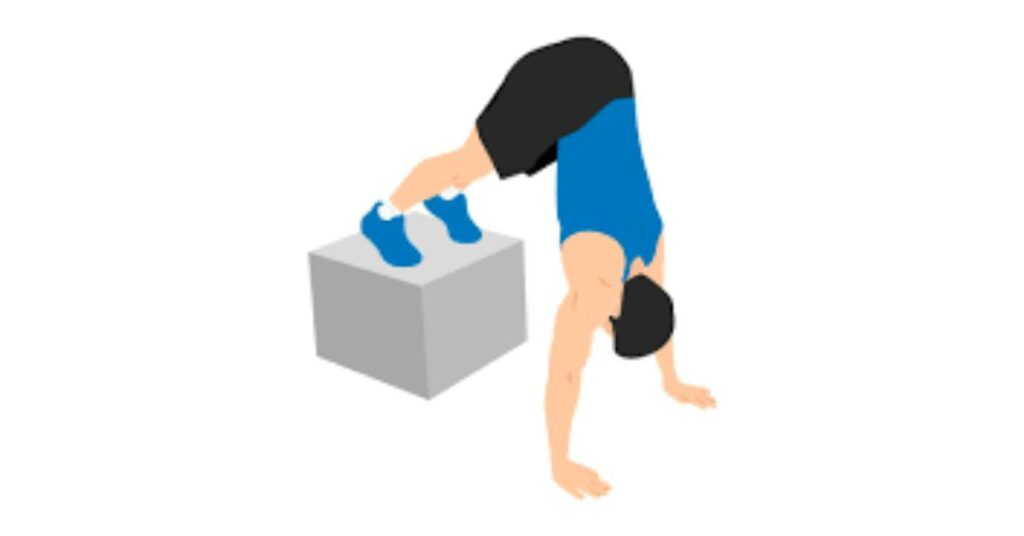
Steps:
- Begin in a push-up position with your hands shoulder-width apart.
- Walk your feet towards your hands, lifting your hips into the air.
- Push through your shoulders, aiming to create an inverted V-shape with your body.
- Hold this position with your head between your arms.
Benefits:
- Strengthens shoulder muscles and improves balance.
- Enhances core stability and wrist strength.
- Challenges your entire upper body.
Wall Angels
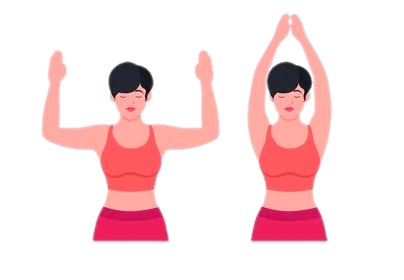
Steps:
- Stand with your back against a wall, feet a few inches away from the wall.
- Raise your arms to shoulder height, keeping your elbows and wrists in contact with the wall.
- Slowly slide your arms up and down the wall in a controlled motion.
Benefits:
- Improves shoulder mobility and flexibility.
- Helps correct rounded shoulder posture.
- Engages the upper back and rear deltoids.
Arm Circles (Extended)
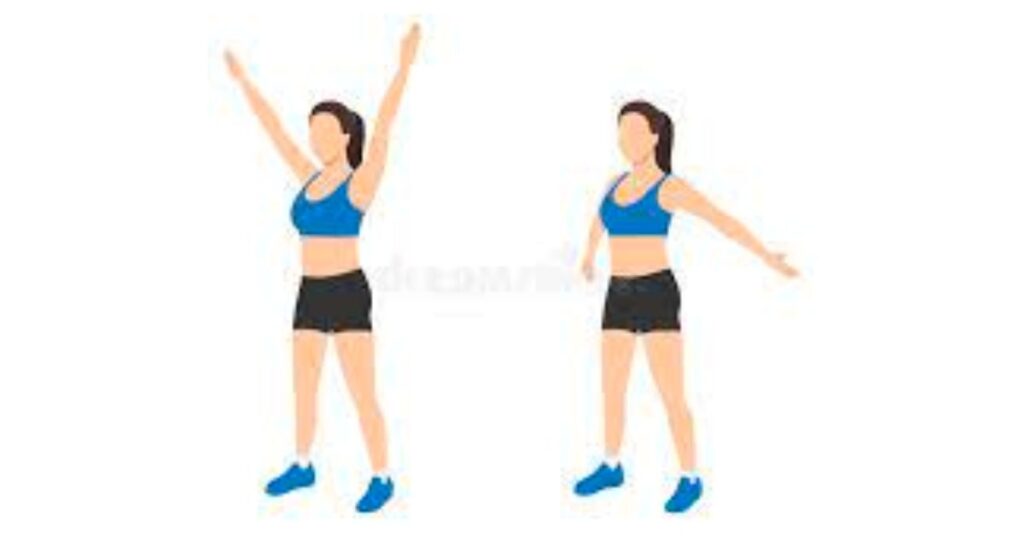
Steps:
- Stand with your feet shoulder-width apart and extend your arms straight out to the sides.
- Make small circular motions with your arms, gradually increasing the circle’s size.
- Reverse the direction of the circles after a set time.
Benefits:
- Enhances shoulder joint mobility.
- Warms up the shoulder muscles before a workout.
- Improves blood circulation in the shoulders.
Dive Bomber Push-Ups

Steps:
- Start in a downward dog position with your hips high and hands slightly wider than shoulder-width apart.
- Lower your chest toward the ground while arching your back and looking forward.
- Push back up to the downward dog position.
Benefits:
- Targets shoulders, chest, and triceps.
- Increases shoulder flexibility and strength.
- Challenges both pushing and pulling muscles.
Lateral Raises (Using Household Items)
Steps:
- Hold a household item (like a water bottle) in each hand.
- Stand with your arms at your sides.
- Lift both arms out to the sides until they are parallel to the ground.
- Lower the items back down slowly.
Benefits:
- Isolates and strengthens the lateral deltoid muscles.
- Provides resistance without weights.
- Improves shoulder definition.
Arching Push-Ups

Steps:
- Begin in a standard push-up position.
- Lower your chest toward the ground while arching your back and looking up.
- Push back up to the starting position.
Benefits:
- Targets the front deltoids and chest.
- Enhances shoulder mobility.
- Engages the upper chest muscles.
Pike Push-Ups
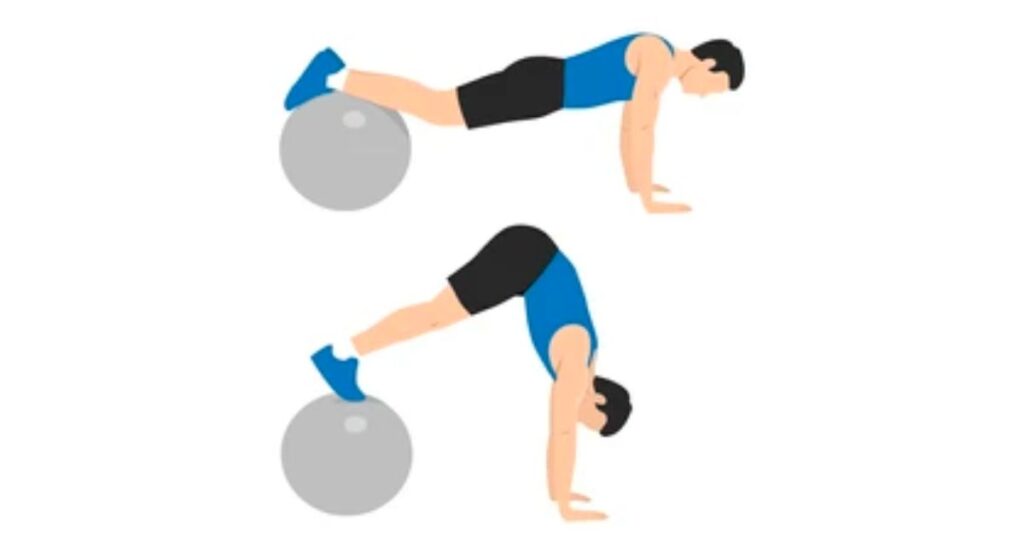
Steps:
- Start in a downward dog position with your hips high and feet close together.
- Lower your head toward the ground by bending your elbows.
- Push back up to the downward dog position.
Benefits:
- Focuses on the front deltoids and triceps.
- Mimics the motion of a shoulder press.
- Strengthens shoulder stability.
Shoulder Shrugs
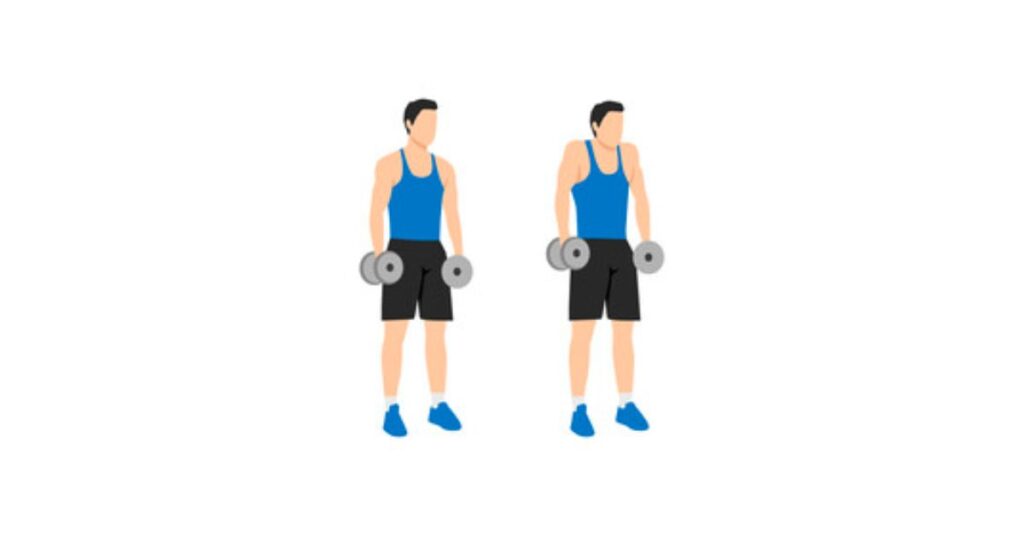
Steps:
- Stand with your feet hip-width apart and arms at your sides.
- Slowly raise your shoulders towards your ears.
- Hold for a moment and then lower them back down.
Benefits:
- Targets the upper trapezius muscles.
- Helps alleviate neck and shoulder tension.
- Improves posture and shoulder strength.
Handstand Push-Ups (Against a Wall)
Steps:
- Face a wall and place your hands on the ground, shoulder-width apart.
- Kick up into a handstand position with your feet against the wall.
- Lower your head towards the ground by bending your elbows.
- Push back up to the handstand position.
Benefits:
- Builds shoulder and triceps strength.
- Enhances balance and body control.
- Requires minimal equipment.
Diamond Push-Ups
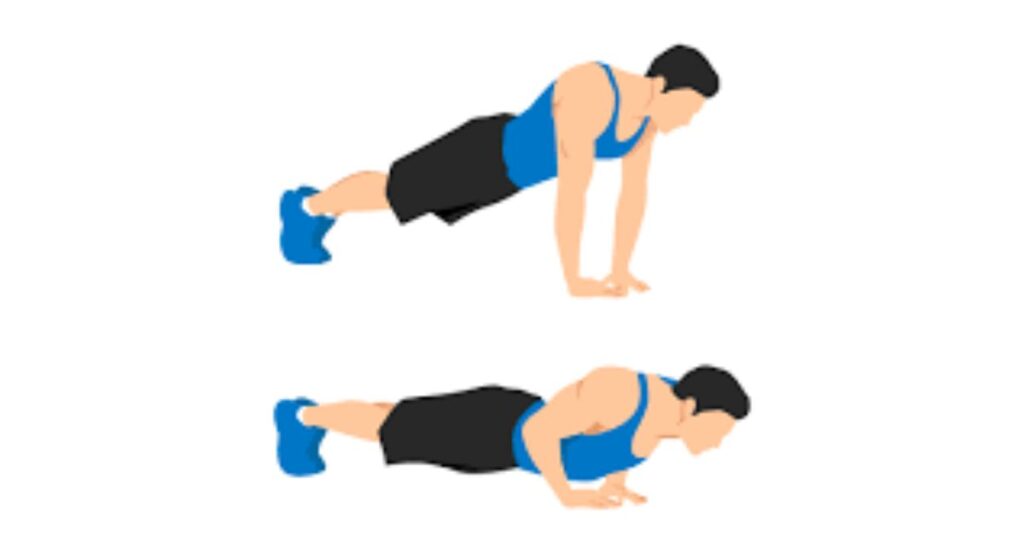
Steps:
- Start in a standard push-up position.
- Place your hands close together under your chest, forming a diamond shape with your thumbs and index fingers.
- Lower your chest toward your hands and push back up.
Benefits:
- Emphasizes the front deltoids and triceps.
- Adds variation to traditional push-ups.
- Strengthens the chest and shoulders.
Shoulder Press (With a Partner)
Steps:
- Sit or stand facing your partner, with your palms pressed against each other.
- Push against your partner’s hands with equal force.
- Continue pushing for a set time or until fatigue sets in.
Benefits:
- Provides resistance without equipment.
- Engages the front deltoids.
- Enhances shoulder strength and endurance.
Plank Shoulder Taps
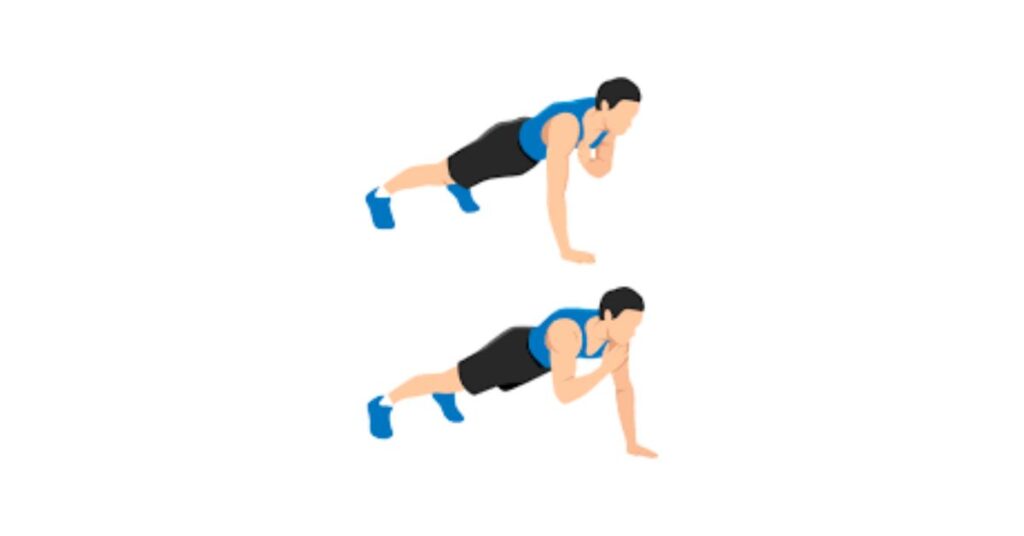
Steps:
- Begin in a forearm plank position.
- Lift one hand off the ground and tap it on the opposite shoulder.
- Alternate tapping shoulders while maintaining a stable plank.
Benefits:
- Improves shoulder stability.
- Engages the core and oblique muscles.
- Enhances balance and coordination.
Arm Circles
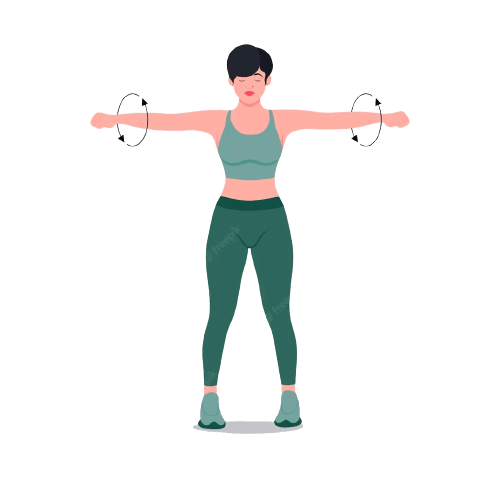
Steps:
- Stand with your feet shoulder-width apart.
- Extend your arms out to the sides.
- Make circular motions with your arms, starting with small circles and gradually increasing the size.
Benefits:
- Warms up the shoulder joints and muscles.
- Enhances shoulder mobility.
- Prepares the shoulders for more intense exercises.
Isometric Holds
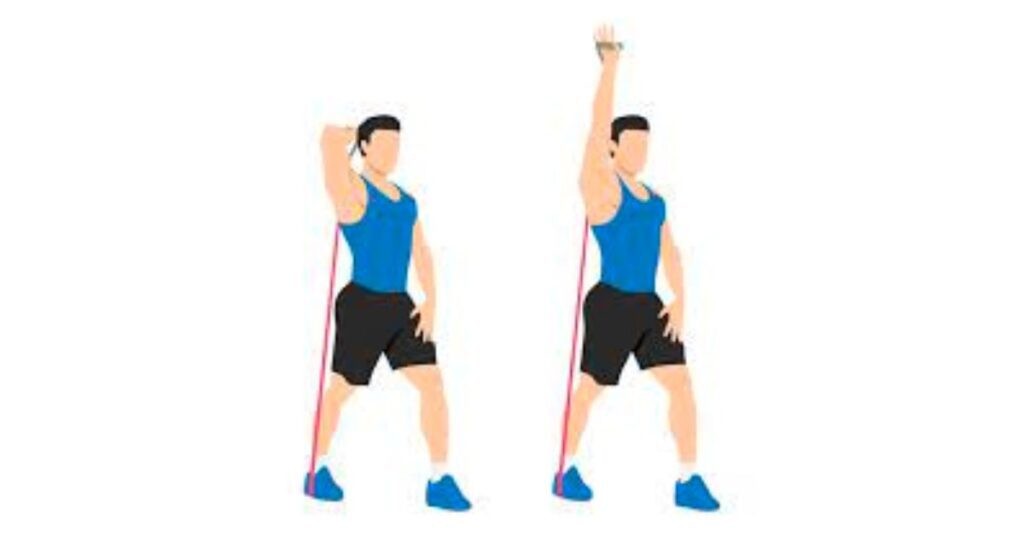
Steps:
- Assume a static position with your arms extended in various directions (e.g., T position or Y position).
- Hold these positions for a specific duration.
Benefits:
- Builds endurance in the shoulder muscles.
- Enhances stability and control.
- Can be done without equipment.
Incline Push-Ups
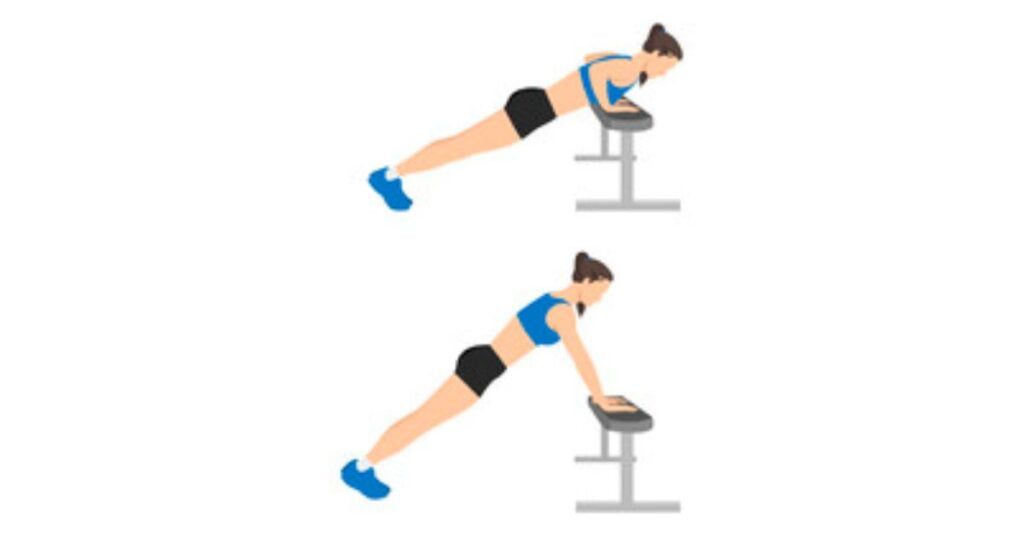
Steps:
- Find an elevated surface, like a bench or step.
- Place your hands on the surface, slightly wider than shoulder-width apart.
- Lower your chest toward the surface, then push back up.
Benefits:
- Targets the upper chest and front deltoids.
- Offers a modification for traditional push-ups.
- Increases shoulder strength.
Arm Circles (Reverse)
Steps:
- Stand with your feet shoulder-width apart.
- Extend your arms out to the sides.
- Make circular motions with your arms in the opposite direction, starting with small circles and gradually increasing the size.
Benefits:
- Reversing the arm circles engages different shoulder muscles.
- Promotes shoulder joint mobility.
- Prepares the shoulders for exercise.
Decline Push-Ups
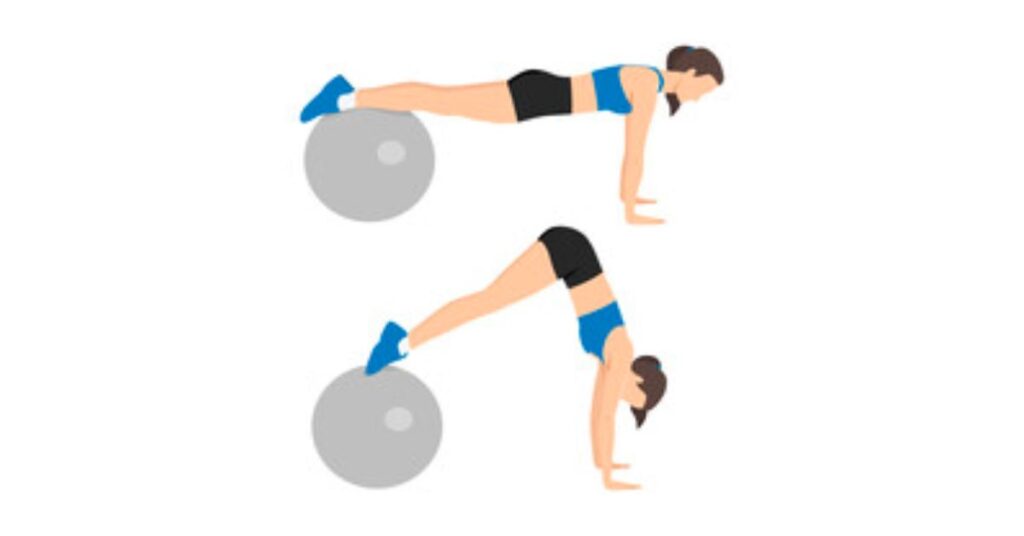
Steps:
- Find a stable surface for your feet to rest on, such as a bench or chair.
- Assume a push-up position with your feet elevated.
- Perform push-ups by lowering your chest toward the ground and pushing back up.
Benefits:
- Focuses on the upper chest and front deltoids.
- Adds intensity to traditional push-ups.
- Strengthens the shoulders and chest.
Push-Up Variations
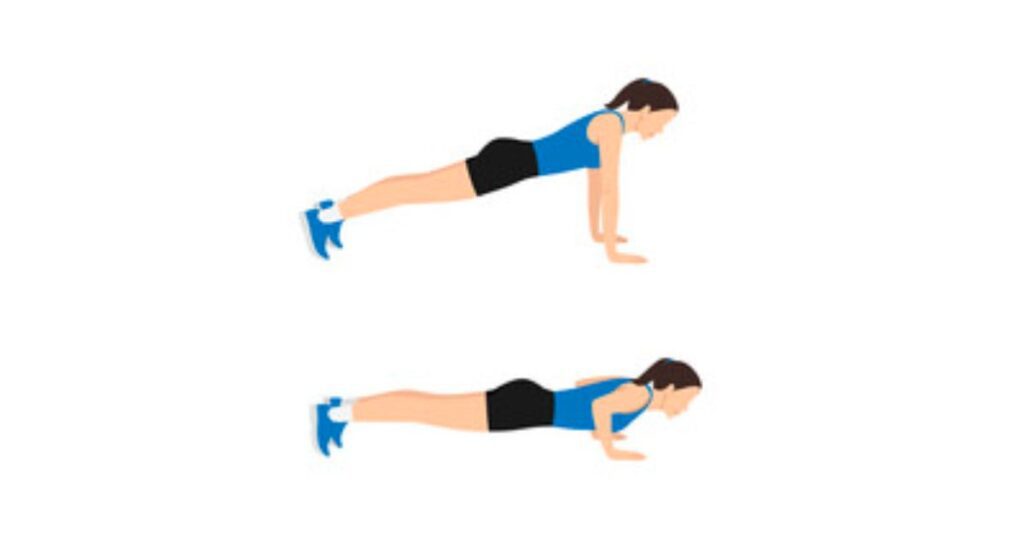
Steps:
- Experiment with different hand placements and body positions during push-ups.
- Variations can include wide-grip push-ups, narrow-grip push-ups, or staggered hand positions.
Benefits:
- Offers versatility in targeting shoulder and chest muscles.
- Adds variety to your workout routine.
- Helps prevent workout plateaus.
Tips for a Safe and Effective Workout
When it comes to bodyweight workouts, ensuring both safety and effectiveness is paramount. Whether you’re a seasoned fitness enthusiast or just embarking on your fitness journey, here are invaluable pointers to keep your workouts not only secure but also highly rewarding.
- Commence with a Proper Warm-Up: Kickstart each workout with a comprehensive warm-up session. Engage in dynamic stretches or light cardio activities like jumping jacks or jogging in place. This elevates your heart rate, enhances blood circulation to your muscles, and readies your body for the main workout.
- Prioritize Form Over Repetitions: It’s tempting to fixate on the number of repetitions, but quality always surpasses quantity. Pay meticulous attention to your form during each exercise. Proper form not only prevents injuries but also guarantees that you’re effectively targeting the correct muscle groups.
- Listen to Your Body: Your body is your ultimate guide. If you experience discomfort beyond the usual muscle soreness, it’s a clear signal to either cease or modify the exercise. Pushing through pain can result in injuries. Remember, it’s perfectly acceptable to take breaks and progress at your own pace.
- Maintain Adequate Hydration: Proper hydration is indispensable for any workout, including bodyweight exercises. Dehydration can lead to reduced performance and muscle cramping. Ensure you consume water before, during, and after your workout to stay adequately hydrated.
- Integrate Rest Days: Rest is as vital as exercise itself. Your muscles require time to recuperate and strengthen. Schedule rest days between intense workouts to facilitate your body’s healing process and avert overtraining.
- Diversify Your Routine: Variety is the key to an effective workout regimen. Incorporate a range of different bodyweight exercises to target various muscle groups and prevent monotony. This not only keeps your workouts engaging but also thwarts plateaus.
- Gradual Progression: Avoid rushing your progress. Incrementally increase the intensity, duration, or complexity of your workouts. This gradual approach reduces the risk of overuse injuries and allows your body to adapt safely.
- Employ Proper Equipment: If you decide to include equipment such as resistance bands or yoga mats in your bodyweight workouts, ensure they are in good condition and suitable for your exercises. Regularly inspect for wear and tear to prevent accidents.
- Master Proper Breathing: Proper breathing is often overlooked but is pivotal for optimal performance. Exhale during the exertion phase (e.g., during push-ups) and inhale during the less strenuous phase. This stabilizes your core and provides oxygen to your muscles.
- Wind Down and Stretch: After completing your workout, allocate time for a cool-down session. Engage in static stretches to enhance flexibility and alleviate muscle tension. Stretching can also help ward off post-workout soreness.
In Conclusion
In the realm of fitness, bodyweight workouts are not merely a passing trend; they represent a timeless avenue to enhance both your physical and mental well-being.
As we conclude our exploration of these tips and exercises, remember that fitness is a daily journey of self-improvement, celebrating your body’s remarkable capabilities.
Bodyweight workouts offer a versatile and accessible path to strength and resilience.
From push-ups to handstands, they foster a deep connection between your mind and body, cultivating discipline and a profound appreciation for your body’s capabilities.
As you continue your bodyweight workout journey, savor the progress, embrace the challenges, and find delight in the process.
Fitness is an enduring adventure brimming with exciting possibilities, and your body is an extraordinary instrument of strength and resilience.
Here’s to your ongoing health and fitness journey.

